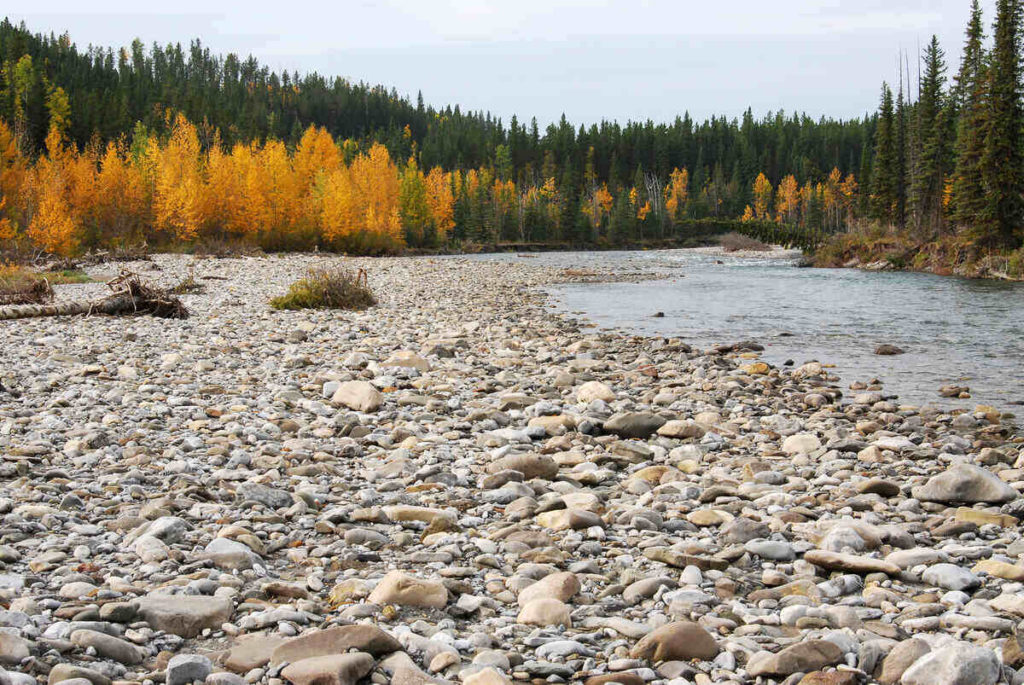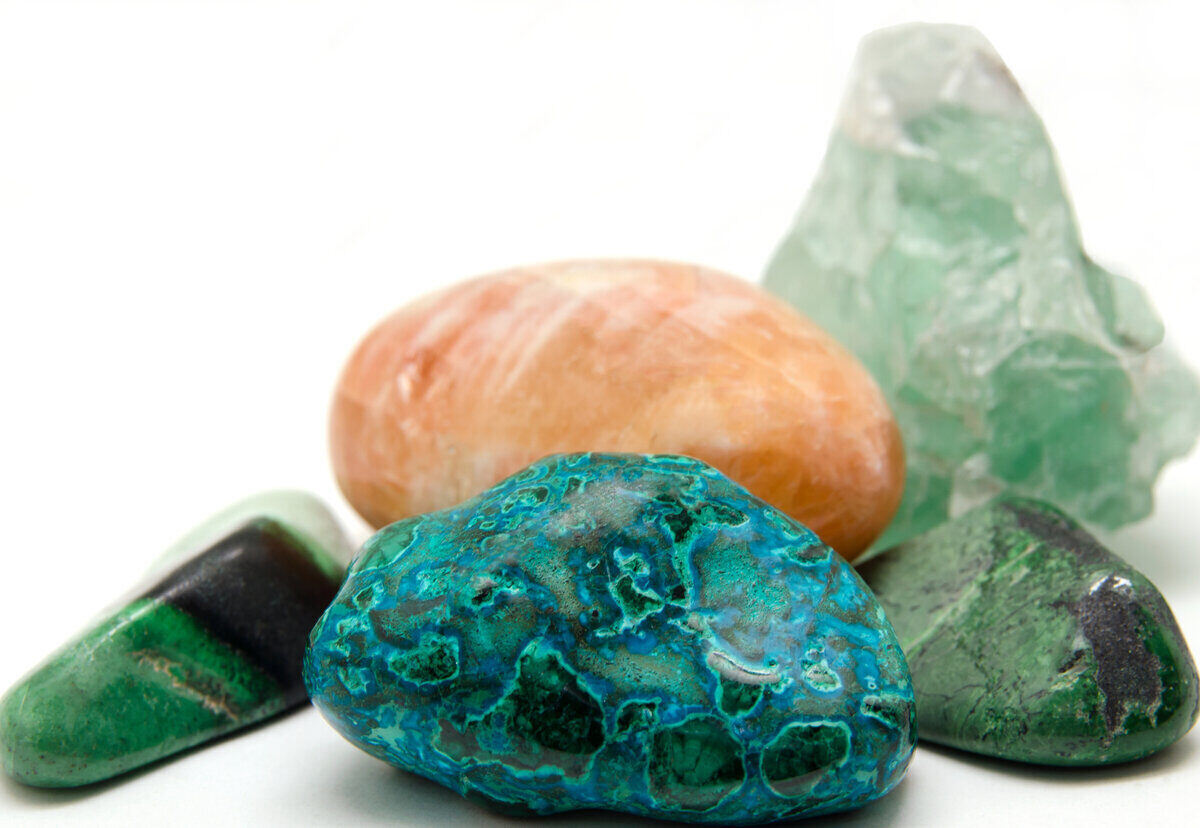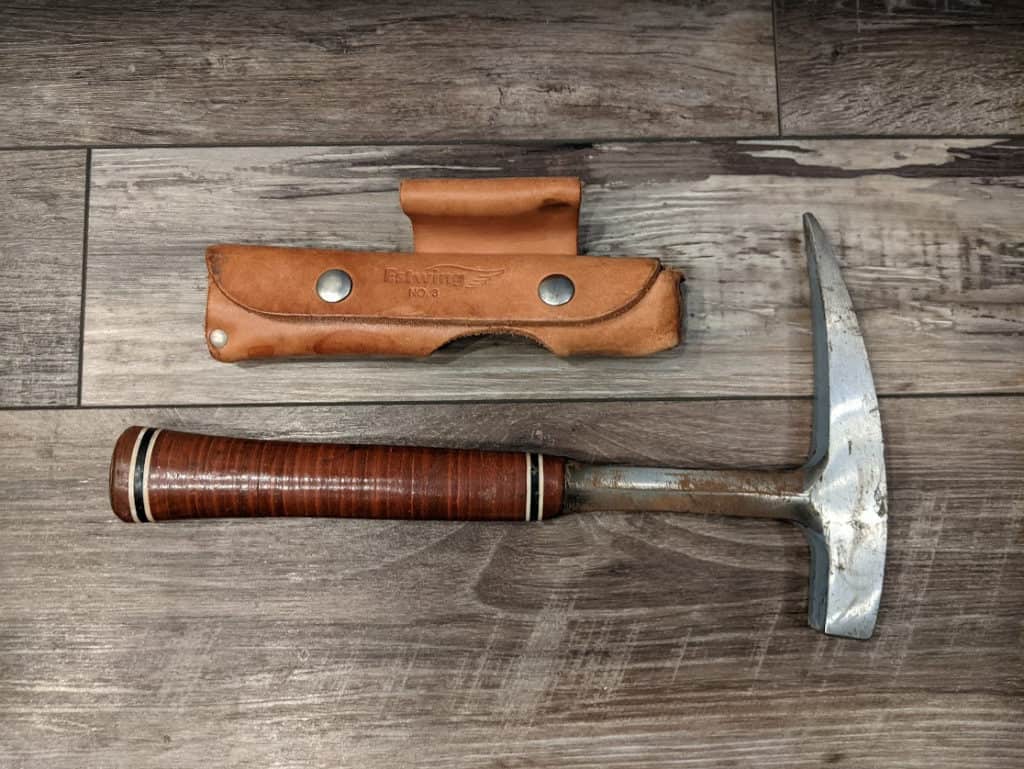Collecting rocks and minerals is an extremely popular hobby and a fantastic way to explore the outdoors. Invariably, one of the first questions that aspiring rockhounds ask is where to find cool specimens to add to their growing collection. It seems like such a basic question, but it isn’t always easily answered. The search for new and exciting places to collect is a never-ending quest for rock and mineral collectors.
In general, the best places to collect rocks near you are areas with gravels and outcrops where rocks and minerals have been freshly exposed. In particular, try searching through gravels in stream beds, riverbanks, and beaches, as well as exposed rock in old quarries, road cuts, and mine tailings.
Knowing the general types of areas to rockhound is only so useful, though. I have scoured through countless resources to find over 2500 specific locations in the United States to give you a great idea of where you can search and what types of specimens you can find near you.
Rockhounding Sites in the United States
The map above is the culmination of hundreds of hours of work, showing thousands of rockhounding sites across the United States and what types of rocks and minerals you can find at each one. For a more in-depth look at rockhounding in your state, I highly recommend checking out my state-by-state rockhounding guides that will give you everything you need to get out and start collecting.
To read more about rockhounding in your state, click on the map below:
It will come as no surprise that some areas of the United States are better than others for rockhounding. Mountainous, heavily mineralized areas like the Appalachians and Rockies are obvious standouts, and the deserts of Arizona and New Mexico are famous for their unique gemstones. Agate collecting is popular almost everywhere in the U.S., but especially in the Midwest and on the beaches of the Pacific Northwest.
There is a wide variety in the types of locations listed in these guides, but all of them have been documented as areas where noteworthy rocks and minerals have been found at some point or another.
Types of rockhounding sites:
- Stream beds
- Washes & draws
- Mines
- Riverbanks
- Quarries
- Fee-to-dig mines
- Beaches
- Road cuts
- Recreational areas
- Outcrops
- Prospects

The types of locations you have access to will largely depend on where you live, as will the type of rocks. To find specific rockhounding sites near you I would highly recommend checking out my state rockhounding guides (see above).
Many people have great success with consulting a state-specific rockhounding book. These types of books have detailed information about dozens of rockhounding sites including maps, directions, information on what you can find, and what tools to bring. I am especially fond of the Rockhounding Series which has books devoted to most U.S. States. You can find them on Amazon for very reasonable prices, and they are a very worthwhile investment for any budding collector.
Note that these books aren’t 100% accurate all the time. This goes for almost any source of information when it comes to rockhounding (including my own site) because sites are sometimes built over, have a change in ownership, or become closed for any number of reasons. The most reliable way to find great places to collect is to join up with a local rockhounding club or a more experienced collector who has been to locations before and can show you the ropes. This site is a bit dated but is the best collection of rockhounding clubs in the U.S. that I’ve seen compiled anywhere.
Types of Rocks and Minerals Found Near You

In order to find out what kinds of rocks and minerals you can find near you, you must first get a general grasp of the geology of your area, as that will largely dictate what types of material is available. Some places like the Pacific Northwest have massive lava flows, while areas like the Rockies and Appalachians have uplifted and eroded rocks of almost all varieties. States like Louisiana and Florida are relatively lacking in variety because their surface geology is almost entirely comprised of young sedimentary rocks.
In most cases, you can get a lot of extremely useful information about your area’s geology by visiting your state’s official geological survey website. You can almost always find detailed, informative geological maps and other useful information (sometimes including rockhouding sites) that will give you a good feel for your local geology and what types of rocks and minerals can be found near you.
In general, the types of rocks and minerals you can find near you will depend entirely upon the geology of your area, including what rock layers are exposed at the surface, how weathered those rocks are, property ownership, and how accessible the terrain is.
For more detailed information on the types of rocks and minerals you can find in your area I would again direct you to my state-by-state rockhounding guides. Not only do I detail what types of specimens are most commonly collected in each state, but towards the end of each article, I have left useful references including links to geological survey sites and informative articles.
Rockhounding Tools – What to Take With You

The tools and equipment you need for rockhounding will vary significantly depending on where you are searching and what types of specimens you’re looking for. Some locations will require nothing but your eyes, hands, and feet, while others will need specialized tools like hammers, picks, GPS units, shovels, and chisels.
There are some pieces of gear that I would recommend taking on almost any rockhounding excursion, regardless of the type of site you’re visiting. These are things that come in handy almost every time I venture to the field, and they are generally inexpensive and easy to bring. One of the great things about rockhounding is that it’s a relatively inexpensive hobby, but these are the items that I would recommend investing in first if you’re looking to get into the hobby:
Near “Must-Have” Rockhounding Gear:
- Wire brush – For scraping away dirt and clay from any rocks you find
- Water spray bottle – To help clean specimens and bring out their color and character
- Waterproof notebook – It’s often helpful to take notes about what you’ve found and where
- Bucket or bag – I like to keep a small bag on my belt to hold my finds
- Backpack – My Osprey backpack is my favorite piece of equipment and comes with me almost every time
- Waterproof hiking boots – Especially useful if you’re going on longer hikes or searching in stream beds
- Field guide – Handy for quick rock and mineral identification, especially if you’re new to the hobby
If you plan on visiting a location like a quarry or outcrop where you think you’ll likely need to break apart larger rocks then you’ll want to invest in some more specialized equipment. A rock hammer (or rock pick) is the quintessential tool of geologist and is handy for breaking off a piece of outcrop to expose fresh surfaces. I can’t recommend the Estwing 22 oz rock pick enough – it’s well worth the extra few bucks compared to cheaper knockoffs. For even heavier work I’d recommend a small sledge hammer and a chisel (with a hand guard!)
There are plenty of other pieces of equipment that you might consider depending on where you’re headed. If you plan on trying out a remote location I’d definitely recommend investing in a quality handheld GPS unit and outfitting it with relevant maps and coordinates. Trekking poles are well worth it if you’re travelling over rugged terrain (these ones from Amazon got me up Mount Kilimanjaro).
Road cuts are really popular (and easily accessible) rockhounding sites, but are notoriously dangerous. It is generally recommended that if you’re going to collect on the side of the road to wear a safety vest so that drivers can easily see you. It doesn’t have to be anything fancy – you can get one like this from Amazon for super cheap.
Legality of Rock & Mineral Collecting
You may be wondering if it’s legal to collect rocks and minerals – and if you’re not, you should be. Probably the most commonly asked question after “where to look” is “am I allowed to collect here?” As it turns out, this is an extremely important question that you absolutely need to know the answer to before you collect on – or even venture onto – a piece of property.
Respecting property ownership and collecting laws is a cornerstone of rockhounding. You do not want to give fellow hobbyists a bad reputation and ruin a good spot for everyone, or even face legal action. Unfortunately, it isn’t always easy to figure out whether or not you’re allowed to collect on any given piece of land.
As a general rule, you should always assume that you do not have permission to collect rocks and minerals on any piece of property. Always get explicit permission (if it’s in writing that’s even better), especially if the land is privately owned. Some property owners are happy to let amateur collectors search on their property, while others expressly forbid it for a variety of reasons including privacy and liability concerns. It’s important to respect the owner’s wishes no matter how they respond to your request.
In my state rockhounding guides I have left helpful resources that should get you started when it comes to identifying and contacting land owners. Collecting on public land is your best and easiest bet, but even that can be complicated territory.
Rock and mineral collecting is illegal in National Parks and all other federal land managed by the National Park Service. National Forests and BLM lands are generally open for collecting, so long as you are not infringing on a private mining claim. State-owned lands will vary by state and property type.
For a more detailed look at the legality of rock collecting on public lands, I would point you towards my comprehensive articles on the subject:
- Rock Collecting on Public Land: Laws and Regulations
- Can You Collect Rocks in State Parks? All 50 States Answered
Here are some additional resources to help you check on land ownership and mineral claims:
- US Forest Service Interactive Map
- BLM’s Mineral Land and Records System – to check for mineral claims
